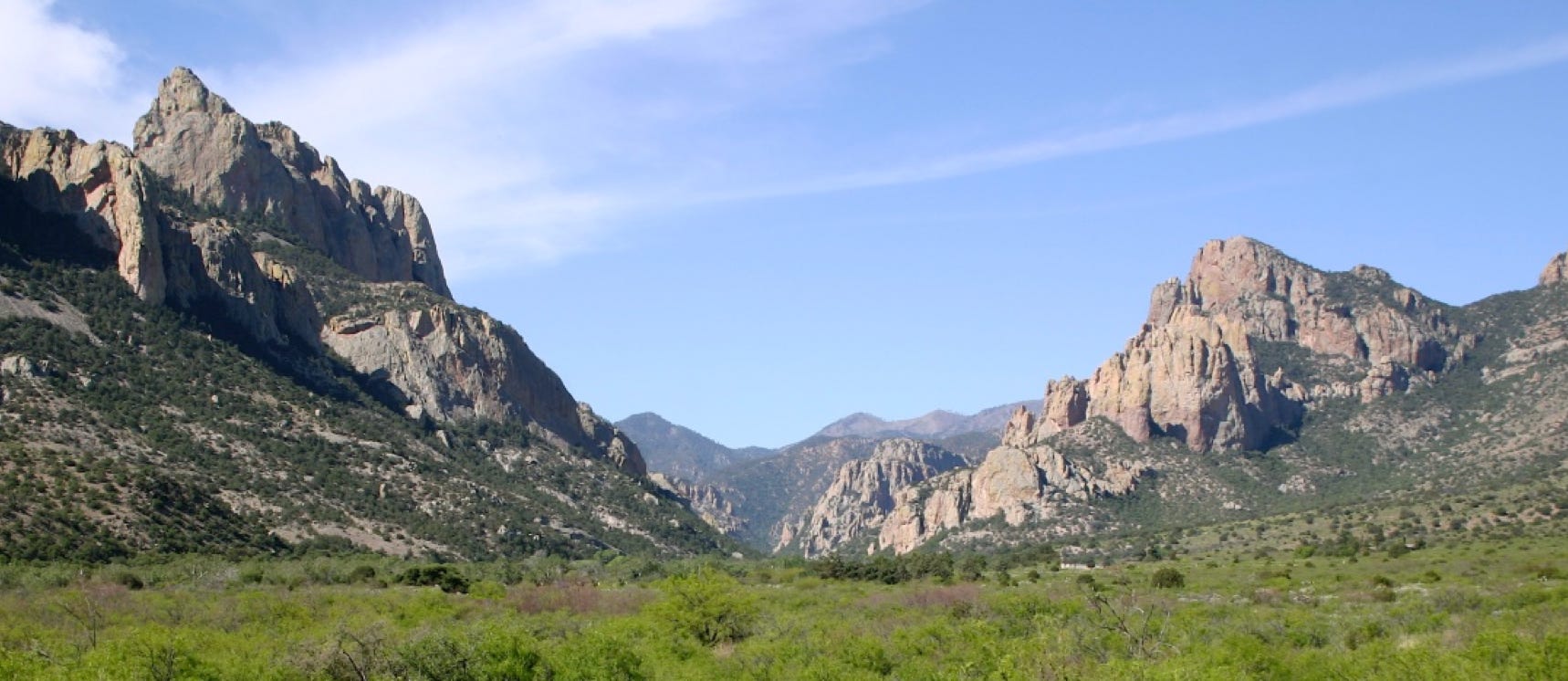Serving The Communities Of Portal and Rodeo (www.portalrodeo.com)
Portal, AZ - Rodeo, NM
Serving The Communities Of Portal and Rodeo (www.portal-rodeo.com)
Serving The Communities Of Portal and Rodeo (www.portal-rodeo.com)

Based Upon "Portal To Paradise" by Alden Hayes
There was no immediate stampede into southeastern Arizona following the removal of the Chiricahua Apaches to San Carlos, but a year later in the fall of 1877, three families of pioneers were camped in mouth of Seven Mile Canyon, east of Camp Bowie. The canyon was soon called Emigrant for the Reeds and the Riggses, who had come separately and from opposite directions in the search for a better stake.
Stephen Bayden Reed, a widower with two children, had spent the past year on the Gila, having come from California. Reed was born in Gasconade County, Missouri, to Leonard R. Reed and Rhoda Veach. He was nineteen early in 1848 when he left Independence with his father for Texas, which was advertising for families to settle its vast public lands. The Reeds had harvested one crop when they got the news of gold in California. It was widely believed that there a man make his fortune in a jiffy, picking up nuggets from the stream beds. The Reeds were hardly settled in Texas. Home ties had been broken, so it was easy for them to keep moving. They joined a party of two hundred and left for California by way of Arizona.
For a year they worked along the Merced River, diverting stream and shoveling muck into sluice boxes. Then, like most Forty-Niners, they learned it was more profitable to provide goods and services to miners than to mine. For a time they cut timber and hauled logs out of the mountains with oxen, building such towns as Mariposa and Sonora. Stephen married Nancy Nestor and located in the San Joaquin Valley near Stockton and began to farm. They had a son, Wesley. After the Civil War Nancy died and Stephen married the widow Sanderson who had an infant daughter, Lucinda Isabella. Stephen got the itch to move, and remembering favorably the grassy valleys and mountains of Arizona, he pulled up stakes again in 1875.
In the spring of 1876 the Reeds reached Safford, where a small group of farmers had settled the year before. They arrived in time to clear the land and get seed in the ground, and while their crop matured, the removal of the Apaches from the Chiricahua Mountains opened up that land for one more move. Apparently Stephen’s second wife died on the Gila Valley farm. for in the fall only three family members left the valley for Apache Pas: Stephen’s stepdaughter in a bull drawn wagon driven by Wesley and Stephen driving a small bunch of cattle.
By late late fall 1878 Stephen Reed had been a year in what he’d expected would be a temporary camp in Emigrant Canyon. He thought if was safe to move out and the site he chose was Cave Creek Canyon, a choice that may have weighted by the winter camp of a squad of Camp Bowie soldiers in the canyon’s mouth.
At Stephen’s camp the canyon pinched down to pass between cliffs and steep talus only a few hundred feet apart. Four miles upstream at the junction of two forks was a spring in a basin of open oak woodland and there he found the spot he wanted to settle. He couldn’t get a wagon to the basin through the tree-choked, boulder-strewn canyon, but over the winter he made it possible. Still in his prime at fifty, Stephen could swing an axe. All winter he and Wesley cut through the tangles of fallen timber and felled trees. By spring they had a road and were able to move camp to what would be ”the Reed place” for forty years.
Through the spring and summer of 1879, the men cut cypress, fir, and pine logs, squared them with a broadax, and raised the cabin walls. They dug out a saw pit and put up a frame for sawing lumber with a whipsaw brought from California. Thus they were able to frame doors and windows, make a board floor, and shingle a roof with pine shakes split out with a froe and put on with cut nails brought from Silver City, one hundred miles away.

